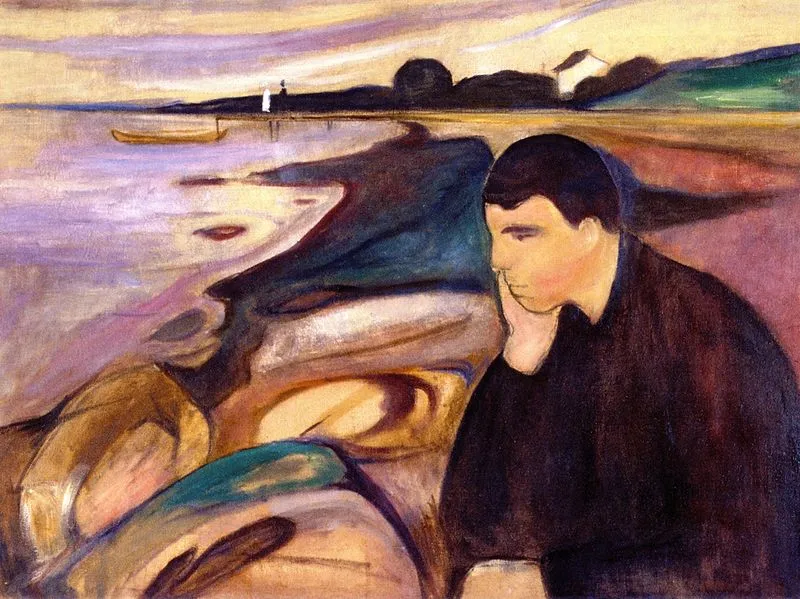Art is a powerful form of expression that can communicate complex and subtle emotions to the viewer. Some paintings are especially effective in evoking feelings, either by depicting them directly or by creating a mood or atmosphere that resonates with the viewer. In this blog post, we will explore some examples of paintings that convey emotions and how they achieve this effect.
10. “The Last Supper” by Leonardo da Vinci
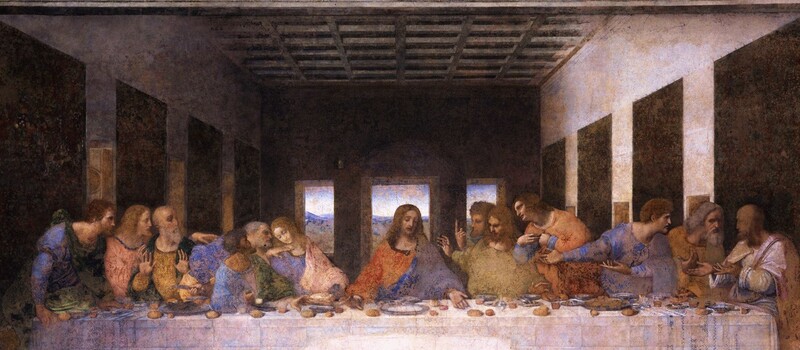
This famous painting depicts the scene of Jesus and his disciples having their final meal before his crucifixion. The painting is full of symbolism and hidden meanings, but it also conveys a range of emotions, such as love, loyalty, betrayal, sadness, and fear. The viewer can sense the tension and drama in the expressions and gestures of the characters, as well as the contrast between light and dark, order and chaos. The painting invites the viewer to empathize with the characters and their situation, and to reflect on the meaning of faith and sacrifice.
9. “The Kiss” by Gustav Klimt

This painting is one of the most iconic examples of Art Nouveau, a style that emphasized organic forms, decorative patterns, and sensual themes. The painting shows a couple embracing in a field of flowers, surrounded by a golden cloak that envelops them. The painting evokes a feeling of passion, intimacy, and bliss. The viewer can feel the warmth and tenderness of the lovers, as well as the harmony and beauty of nature. The painting celebrates the joy and ecstasy of romantic love.
8. “Guernica” by Pablo Picasso

This painting is one of the most powerful anti-war statements in art history. It depicts the bombing of Guernica, a Basque town in Spain, by Nazi Germany during the Spanish Civil War. The painting is a collage of distorted and fragmented figures, animals, and objects that express the horrors and chaos of war. The painting evokes a feeling of shock, anger, grief, and despair. The viewer can feel the pain and suffering of the victims, as well as the cruelty and injustice of the aggressors. The painting denounces the brutality and futility of war.
7. “From the Lake” by Georgia O’Keeffe

This painting is one of the many abstract landscapes that O’Keeffe created based on her impressions of nature. The painting shows a blue lake surrounded by green hills and white clouds. The painting evokes a feeling of calmness, serenity, and wonder. The viewer can feel the tranquility and beauty of nature, as well as the curiosity and imagination of the artist. The painting invites the viewer to explore and appreciate the natural world.
6. “At Eternity’s Gate” by Vincent Van Gogh

This painting is one of the last works that Van Gogh created before his death. It depicts an old man sitting on a chair with his head in his hands. The painting is a self-portrait that reflects Van Gogh’s mental state at the time. The painting evokes a feeling of loneliness, despair, and hopelessness. The viewer can feel the isolation and anguish of the artist, as well as his longing for peace and salvation. The painting reveals the inner turmoil and struggle of Van Gogh.
5. “Automat” by Edward Hopper
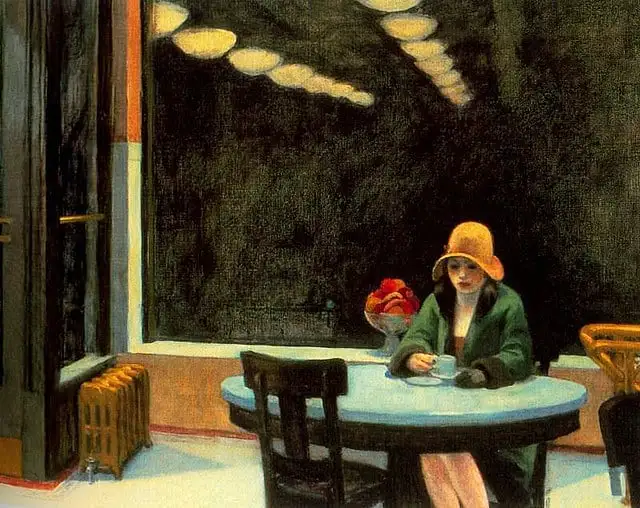
This painting is one of the many urban scenes that Hopper painted to capture the mood and atmosphere of modern life. The painting shows a young woman sitting alone in a diner at night, looking out at the street. The painting evokes a feeling of alienation, boredom, and melancholy. The viewer can feel the emptiness and detachment of the woman, as well as the coldness and indifference of the city. The painting portrays the loneliness and isolation of urban life.
4. “La Mélancolie” by Louis-Jean-François Lagrenée
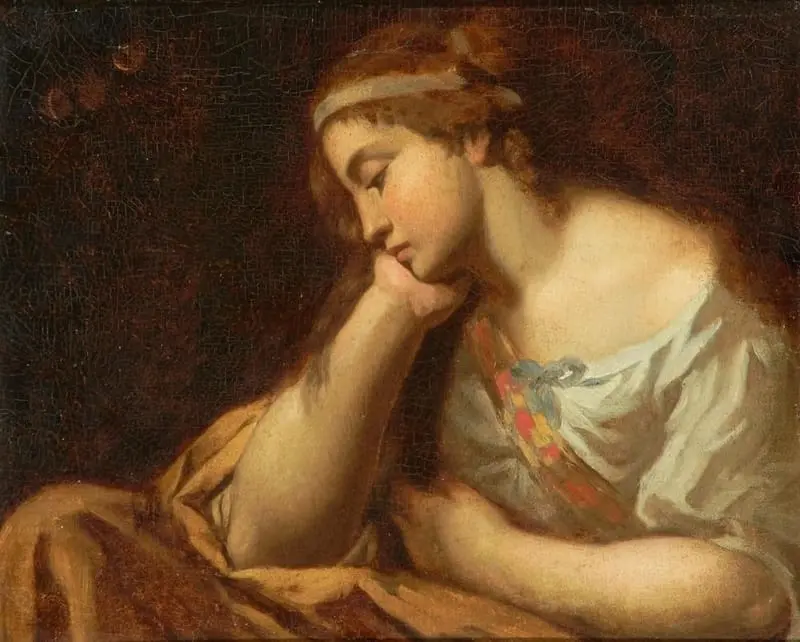
This painting is one of the many representations of melancholy in art history. It depicts a young woman sitting on a rock with her head resting on her hand. She is surrounded by symbols of sadness, such as a skull, an hourglass, a broken lute, and a wilted flower. The painting evokes a feeling of sorrow, regret, and nostalgia. The viewer can feel the grief and despair of the woman, as well as her longing for something lost or unattainable. The painting expresses the sentiment of melancholy.
3. “The Return of the Prodigal Son” by Rembrandt

The Return of the Prodigal Son is an oil painting by Rembrandt, part of the collection of the Hermitage Museum in St. Petersburg.
It is among the Dutch master’s final works, likely completed within two years of his death in 1669.
The painting depicts the moment of the prodigal son’s return to his father in the Biblical parable and is a renowned work described by art historian Kenneth Clark as “a picture which those who have seen the original in St. Petersburg may be forgiven for claiming it to be the greatest picture ever painted”.
The Return of the Prodigal Son demonstrates the mastery of the late Rembrandt.
His evocation of spirituality and the parable’s message of forgiveness is considered the height of his art. Rembrandt scholar Rosenberg (et al.) calls the painting “monumental”, writing that Rembrandt interprets the Christian idea of mercy with extraordinary solemnity, as though this were his spiritual testament to the world.
The painting evokes emotions such as repentance, forgiveness, and compassion.
2. “The Scream” by Edvard Munch
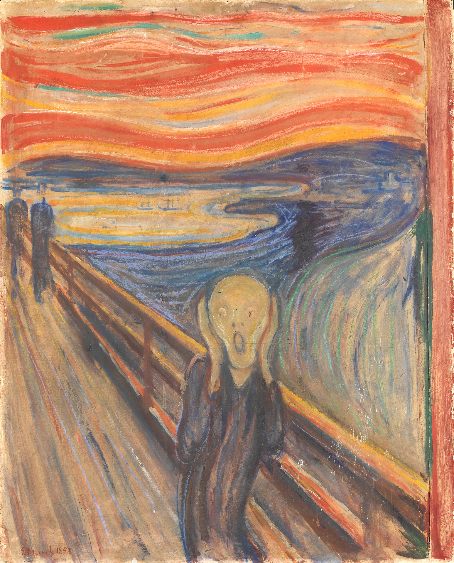
This painting is one of the most famous examples of expressionism, a style that emphasized emotional intensity and distortion over realism. The painting shows a figure with an agonized expression on a bridge with a swirling sky behind him. The painting evokes a feeling of terror, anxiety, and madness. The viewer can feel the panic and dread of the figure, as well as the chaos and turmoil of his surroundings. The painting conveys the existential angst and fear of modern life.
1. “The Starry Night” by Vincent Van Gogh

This painting is one of the most beloved artworks in history. It depicts a night sky filled with stars, a moon, and a comet over a village and hills. The painting evokes a feeling of awe, wonder, and joy. The viewer can feel the enchantment and beauty of the night sky, as well as the creativity and optimism of the artist. The painting celebrates the majesty and mystery of nature and the universe.
